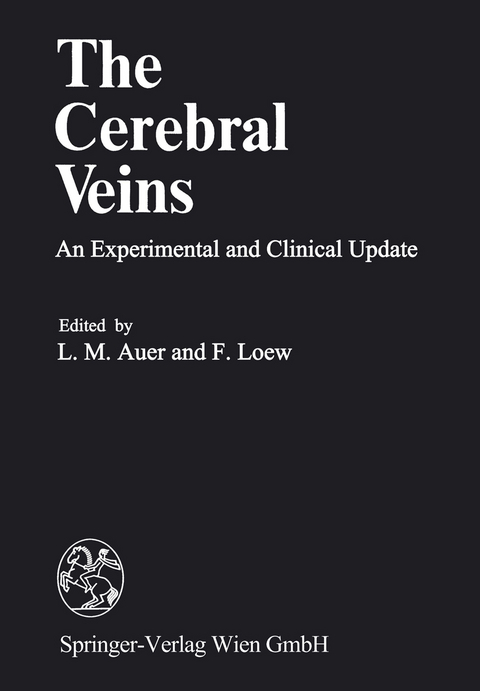
The Cerebral Veins
An Experimental and Clinical Update
Seiten
2014
|
1. Softcover reprint of the original 1st ed. 1983
Springer Wien (Verlag)
978-3-7091-4126-7 (ISBN)
Springer Wien (Verlag)
978-3-7091-4126-7 (ISBN)
First International Symposium on Cerebral Veins, 1982, Graz, Austria
Research in the morphology-angioarchitecture and ultrastructure-of cerebral veins has been widely neglected in past decades; investigation was mainly focussed on the arterial side of brain circulation. This circumstance has certainly had a negative impact on the development of knowledge in clinical medicine about cerebral venous disease. Cerebra} venous pathology and its consequence is, however, a frequent problern in clinical neurosur gery, both with regard to operative techniques and conservative manage ment. Therefore, it is not surprising that the initiative to collect, for the first time, data on our present knowledge in basic research of cerebral veins, their structure and function under normal and pathological circumstances, came from clinicians. Regarding the cerebral veins the clinician has primarily in view the dysfunctions originating from embryogenetic malformations, phlebitic obstruction, tumourous shunts, or traumatic lesions. But in addition to that, particular attention should be paid to the microstructure ofthe venous vessel walls, their barrier function, and the venous vasomotor system. Studying these interrelationships has for a long time been both fascinating and of immediate interest to me.
Research in the morphology-angioarchitecture and ultrastructure-of cerebral veins has been widely neglected in past decades; investigation was mainly focussed on the arterial side of brain circulation. This circumstance has certainly had a negative impact on the development of knowledge in clinical medicine about cerebral venous disease. Cerebra} venous pathology and its consequence is, however, a frequent problern in clinical neurosur gery, both with regard to operative techniques and conservative manage ment. Therefore, it is not surprising that the initiative to collect, for the first time, data on our present knowledge in basic research of cerebral veins, their structure and function under normal and pathological circumstances, came from clinicians. Regarding the cerebral veins the clinician has primarily in view the dysfunctions originating from embryogenetic malformations, phlebitic obstruction, tumourous shunts, or traumatic lesions. But in addition to that, particular attention should be paid to the microstructure ofthe venous vessel walls, their barrier function, and the venous vasomotor system. Studying these interrelationships has for a long time been both fascinating and of immediate interest to me.
| Erscheint lt. Verlag | 18.4.2014 |
|---|---|
| Vorwort | F. Heppner |
| Zusatzinfo | XII, 371 p. |
| Verlagsort | Vienna |
| Sprache | englisch |
| Maße | 170 x 244 mm |
| Gewicht | 667 g |
| Themenwelt | Medizinische Fachgebiete ► Chirurgie ► Neurochirurgie |
| Naturwissenschaften ► Biologie ► Humanbiologie | |
| Schlagworte | Blood • brain • Hirngefäss • Hirngefässerkrankung • Intracranial pressure • Morphology • pathophysiology • pharmacology • Physiology |
| ISBN-10 | 3-7091-4126-5 / 3709141265 |
| ISBN-13 | 978-3-7091-4126-7 / 9783709141267 |
| Zustand | Neuware |
| Informationen gemäß Produktsicherheitsverordnung (GPSR) | |
| Haben Sie eine Frage zum Produkt? |
Mehr entdecken
aus dem Bereich
aus dem Bereich
Buch | Hardcover (2024)
De Gruyter (Verlag)
CHF 153,90
850 Fakten für die Zusatzbezeichnung
Buch | Softcover (2022)
Springer (Verlag)
CHF 65,80


